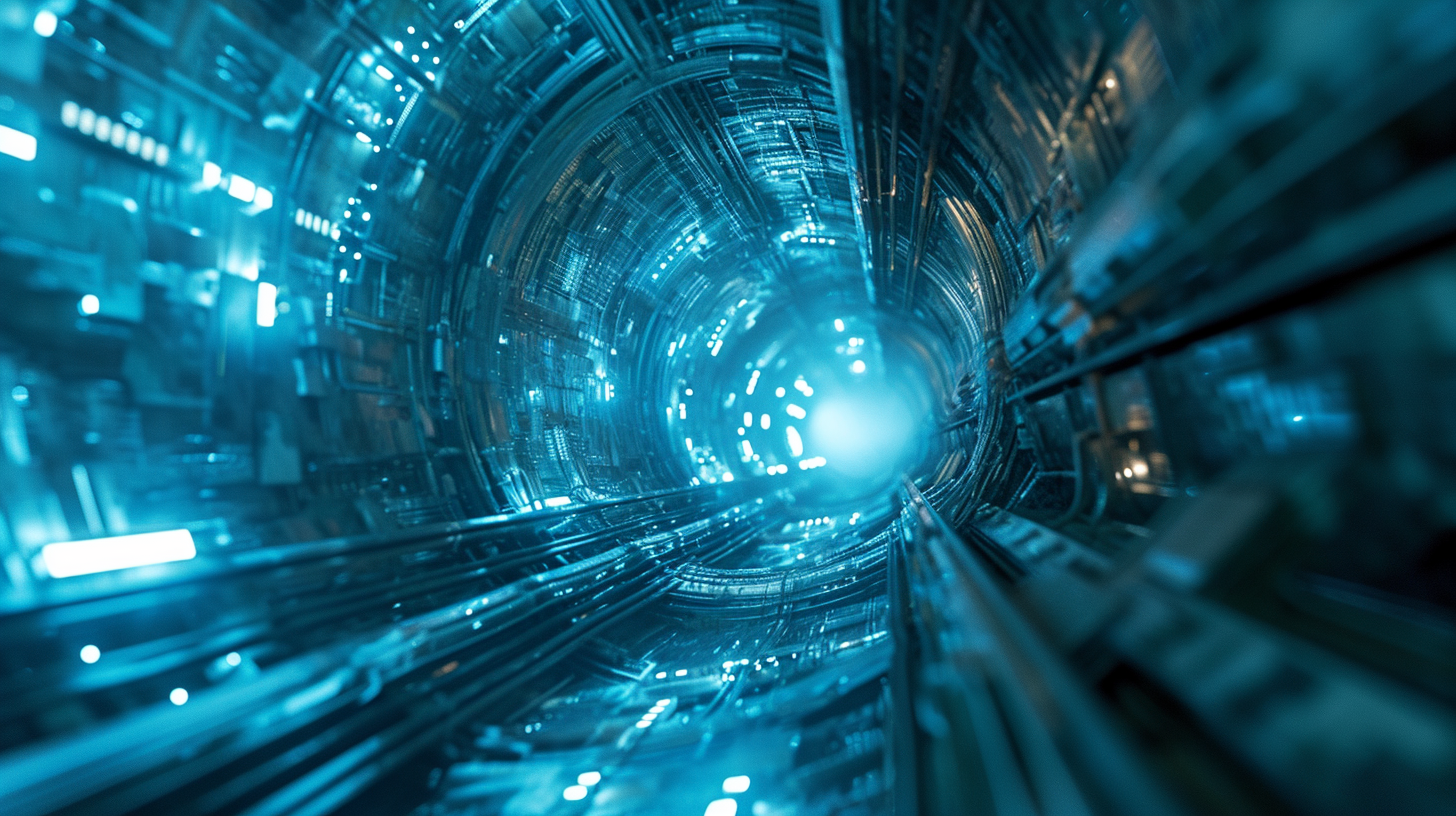
Transfer learning is a powerful technique in deep learning that leverages knowledge gained from solving a related problem to improve the performance on a new task. In the context of computer vision, it involves using a pre-trained model that has been trained on a large dataset, such as ImageNet, and adapting it to a new task with a relatively smaller dataset.
The core idea behind transfer learning is that the lower layers of a deep neural network learn to extract generic features that are useful for a wide range of tasks, while the higher layers become more specialized to the specific task on which the model was trained. By using these lower-level features learned from a large dataset, transfer learning allows us to achieve better performance with fewer training examples and computational resources.
There are two main approaches to transfer learning:
- In this approach, the pre-trained model is used as a fixed feature extractor. The lower layers of the pre-trained model are frozen, and only the higher layers are retrained on the new task.
- This approach involves fine-tuning the entire pre-trained model or a portion of it on the new task. The lower layers are initialized with the pre-trained weights, and the entire model or selected layers are fine-tuned using the new dataset.
Transfer learning has proven to be highly effective in various computer vision tasks, such as image classification, object detection, and semantic segmentation. It has enabled significant performance improvements, especially when dealing with limited training data or computationally constrained environments.
Implementing Transfer Learning in Keras
Keras, a high-level neural networks API written in Python, provides a convenient way to implement transfer learning. Here’s how you can leverage transfer learning in Keras:
-
Load a pre-trained model: Keras comes with several pre-trained models on the ImageNet dataset, which you can load using the appropriate function. For example, to load the VGG16 model:
from keras.applications import VGG16# Load the VGG16 model without the top classification layerbase_model = VGG16(weights='imagenet', include_top=False, input_shape=(224, 224, 3))from keras.applications import VGG16 # Load the VGG16 model without the top classification layer base_model = VGG16(weights='imagenet', include_top=False, input_shape=(224, 224, 3))from keras.applications import VGG16 # Load the VGG16 model without the top classification layer base_model = VGG16(weights='imagenet', include_top=False, input_shape=(224, 224, 3))
-
Freeze the base model layers: Depending on your approach (feature extraction or fine-tuning), you may want to freeze the base model layers to prevent them from being updated during training. This can be done by setting the
trainableattribute of the layers toFalse:for layer in base_model.layers:layer.trainable = Falsefor layer in base_model.layers: layer.trainable = Falsefor layer in base_model.layers: layer.trainable = False -
Add custom layers: Construct your custom model by adding new layers on top of the base model. That is where you can introduce your task-specific layers, such as fully connected layers for classification or upsampling layers for segmentation tasks.
from keras.layers import Dense, Dropout, Flatten# Flatten the output of the base modelx = base_model.outputx = Flatten()(x)# Add custom layersx = Dense(512, activation='relu')(x)x = Dropout(0.5)(x)predictions = Dense(num_classes, activation='softmax')(x)# Create the final modelmodel = Model(inputs=base_model.input, outputs=predictions)from keras.layers import Dense, Dropout, Flatten # Flatten the output of the base model x = base_model.output x = Flatten()(x) # Add custom layers x = Dense(512, activation='relu')(x) x = Dropout(0.5)(x) predictions = Dense(num_classes, activation='softmax')(x) # Create the final model model = Model(inputs=base_model.input, outputs=predictions)from keras.layers import Dense, Dropout, Flatten # Flatten the output of the base model x = base_model.output x = Flatten()(x) # Add custom layers x = Dense(512, activation='relu')(x) x = Dropout(0.5)(x) predictions = Dense(num_classes, activation='softmax')(x) # Create the final model model = Model(inputs=base_model.input, outputs=predictions)
-
Compile and train the model: Compile the model with your desired loss function, optimizer, and metrics, and then train it on your dataset.
model.compile(optimizer='adam', loss='categorical_crossentropy', metrics=['accuracy'])# Train the modelmodel.fit(train_data, train_labels, epochs=10, validation_data=(val_data, val_labels))model.compile(optimizer='adam', loss='categorical_crossentropy', metrics=['accuracy']) # Train the model model.fit(train_data, train_labels, epochs=10, validation_data=(val_data, val_labels))model.compile(optimizer='adam', loss='categorical_crossentropy', metrics=['accuracy']) # Train the model model.fit(train_data, train_labels, epochs=10, validation_data=(val_data, val_labels))
By following these steps, you can leverage the power of transfer learning in Keras, taking advantage of pre-trained models and fine-tuning them on your specific task. This approach can significantly reduce the amount of data and computational resources required to achieve good performance on various computer vision tasks.
Fine-tuning Pre-trained Models
Fine-tuning a pre-trained model involves updating the weights of the entire model or a portion of it during training on the new task. This approach allows the model to adapt its learned features to the specific characteristics of the new dataset, potentially leading to better performance compared to feature extraction alone.
The process of fine-tuning in Keras typically involves the following steps:
- Load the pre-trained model and add custom layers for your task.
- Freeze some or all of the pre-trained layers by setting their
trainableattribute toFalse. This prevents the weights of those layers from being updated during training. - Compile the model with your desired loss function, optimizer, and metrics.
- Train the model on your dataset, allowing the trainable layers to update their weights.
Here’s an example of fine-tuning a pre-trained VGG16 model for a binary classification task:
from keras.applications import VGG16
from keras.models import Model
from keras.layers import Dense, Flatten
# Load the VGG16 model without the top classification layer
base_model = VGG16(weights='imagenet', include_top=False, input_shape=(224, 224, 3))
# Freeze the base model layers
for layer in base_model.layers:
layer.trainable = False
# Add custom layers for binary classification
x = base_model.output
x = Flatten()(x)
x = Dense(512, activation='relu')(x)
predictions = Dense(1, activation='sigmoid')(x)
# Create the final model
model = Model(inputs=base_model.input, outputs=predictions)
# Compile and train the model
model.compile(optimizer='adam', loss='binary_crossentropy', metrics=['accuracy'])
model.fit(train_data, train_labels, epochs=10, validation_data=(val_data, val_labels))
In this example, we load the VGG16 model pre-trained on ImageNet, freeze all its layers, and add custom dense layers for binary classification. During training, the weights of the frozen VGG16 layers remain fixed, while the weights of the newly added dense layers are updated based on the new task.
Alternatively, you can choose to fine-tune some of the pre-trained layers by setting their trainable attribute to True. This allows the model to update the weights of those layers during training, potentially leading to better performance but at the cost of increased training time and computational resources.
for layer in base_model.layers[-5:]:
layer.trainable = True
In this example, we set the last five layers of the VGG16 model as trainable, allowing their weights to be updated during fine-tuning.
Fine-tuning pre-trained models can be a powerful technique, especially when working with limited data or computationally constrained environments. However, it is important to carefully think the trade-off between performance and computational resources when deciding which layers to fine-tune.
Selecting the Right Pre-trained Model
When working with transfer learning, selecting the right pre-trained model very important for achieving optimal performance on your specific task. The choice of pre-trained model depends on several factors, including the similarity between the source and target tasks, the size of your dataset, and the computational resources available.
Here are some considerations for selecting the right pre-trained model:
- Choose a pre-trained model that was trained on a task similar to your target task. For example, if you are working on an image classification problem, it would be appropriate to use a model pre-trained on ImageNet, which is a large dataset for image classification.
- If you have a large dataset (e.g., millions of samples), you may benefit from using a more complex pre-trained model with a deeper architecture, as it can capture more intricate features. However, if your dataset is relatively small, a simpler pre-trained model might be more suitable to avoid overfitting.
- More complex pre-trained models require more computational resources (e.g., GPU memory, training time) during fine-tuning. If you have limited resources, you may need to choose a lighter pre-trained model that can be fine-tuned efficiently.
- Before committing to a pre-trained model, it’s a good practice to evaluate its performance on a validation or test set from your target task. This can help you assess whether the model is suitable for your specific problem and dataset.
In Keras, you have access to a variety of pre-trained models on the ImageNet dataset, including VGG16, VGG19, ResNet50, InceptionV3, Xception, and others. You can load these models using the keras.applications module. Here’s an example of loading the ResNet50 model:
from keras.applications import ResNet50 # Load the ResNet50 model without the top classification layer base_model = ResNet50(weights='imagenet', include_top=False, input_shape=(224, 224, 3))
Additionally, you can explore pre-trained models from other sources, such as the TensorFlow Hub or the PyTorch Model Zoo, which offer a wide range of pre-trained models for various tasks and domains.
Ultimately, the best pre-trained model for your task will depend on factors specific to your problem and dataset. It is recommended to experiment with different pre-trained models and evaluate their performance to make an informed decision.
Data Preparation for Transfer Learning
Data preparation is an important step in transfer learning, as it ensures that the new dataset is compatible with the pre-trained model and optimizes the performance of the fine-tuning process. Here are some key considerations and steps for data preparation in transfer learning with Keras:
1. Data formatting and preprocessing
- Ensure that your input data is in the correct format expected by the pre-trained model. For example, if the pre-trained model expects RGB images with a specific size (e.g., 224×224 pixels), you’ll need to resize and preprocess your images accordingly.
- Normalize the input data to match the preprocessing applied during the pre-trained model’s training. This typically involves scaling pixel values to a specific range (e.g., 0-1 or -1 to 1).
from keras.preprocessing import image # Load and preprocess the image img = image.load_img(image_path, target_size=(224, 224)) img_array = image.img_to_array(img) img_array = preprocess_input(img_array) # Normalize pixel values
2. Data augmentation
- Data augmentation is a technique that artificially increases the size and diversity of your dataset by applying random transformations (e.g., rotation, flipping, zooming) to the existing samples.
- Augmenting your data can help prevent overfitting and improve the model’s generalization ability, especially when working with a limited dataset.
from keras.preprocessing.image import ImageDataGenerator
# Create a data generator for augmentation
datagen = ImageDataGenerator(
rotation_range=20,
width_shift_range=0.2,
height_shift_range=0.2,
shear_range=0.2,
zoom_range=0.2,
horizontal_flip=True
)
# Generate augmented data during training
train_generator = datagen.flow_from_directory(
train_data_dir,
target_size=(224, 224),
batch_size=32
)
3. Split data into training, validation, and test sets
- Divide your dataset into separate training, validation, and test sets.
- The training set is used for fine-tuning the pre-trained model.
- The validation set is used for monitoring the model’s performance during training and tuning hyperparameters.
- The test set is used for evaluating the final model’s performance on unseen data.
4. Create data generators or load data into memory
- For large datasets that don’t fit into memory, use data generators to stream data from disk during training and evaluation.
- For smaller datasets, you can load the entire dataset into memory for faster processing.
from keras.preprocessing.image import ImageDataGenerator # Create data generators for training and validation train_datagen = ImageDataGenerator(rescale=1./255, shear_range=0.2, zoom_range=0.2, horizontal_flip=True) val_datagen = ImageDataGenerator(rescale=1./255) train_generator = train_datagen.flow_from_directory(train_data_dir, target_size=(224, 224), batch_size=32) val_generator = val_datagen.flow_from_directory(val_data_dir, target_size=(224, 224), batch_size=32)
By following these steps, you can effectively prepare your data for transfer learning with Keras, ensuring compatibility with the pre-trained model and optimizing the fine-tuning process for better performance.
Evaluating Transfer Learning Performance
Evaluating the performance of your transfer learning model is important to ensure that it meets your desired accuracy and generalization goals. In Keras, you can leverage various evaluation metrics and techniques to assess the model’s performance during training and on unseen data.
Monitoring Training and Validation Metrics
During the training process, Keras provides built-in support for tracking various metrics, such as loss and accuracy. By monitoring these metrics on both the training and validation sets, you can identify potential issues like overfitting or underfitting and make informed decisions about early stopping or adjusting hyperparameters.
model.compile(optimizer='adam', loss='categorical_crossentropy', metrics=['accuracy'])
# Train the model and monitor metrics
history = model.fit(train_generator,
epochs=20,
validation_data=val_generator,
callbacks=[...])
You can then visualize the training and validation metrics over epochs to analyze the model’s performance and convergence.
Evaluating on a Test Set
After training your model, it is essential to evaluate its performance on a separate test set that the model has never seen during training. This provides an unbiased estimate of the model’s generalization ability on new, unseen data.
test_loss, test_acc = model.evaluate(test_generator)
print(f'Test accuracy: {test_acc}')
You can also generate classification reports, confusion matrices, or other evaluation metrics specific to your task to gain deeper insights into the model’s strengths and weaknesses.
Techniques for Improving Performance
If the model’s performance is not satisfactory, you can explore various techniques to improve it, such as:
- Unfreeze and fine-tune additional layers from the pre-trained model to allow for more specialized feature learning.
- Experiment with different hyperparameters, such as learning rate, batch size, or regularization techniques, to find the optimal configuration for your task.
- Apply additional data augmentation techniques to increase the diversity and size of your training data.
- Combine multiple fine-tuned models using ensemble techniques like voting or averaging to improve overall performance.
By carefully evaluating your transfer learning model’s performance and exploring various optimization techniques, you can iteratively improve its accuracy and generalization capabilities, ultimately achieving better results on your target task.
Tips and Best Practices for Transfer Learning in Keras
1. Leverage pre-trained models on large datasets: Pre-trained models on large datasets like ImageNet have learned rich feature representations that can be beneficial for a wide range of computer vision tasks. Leverage these models as a starting point for your task.
2. Freeze base model layers during initial training: When fine-tuning a pre-trained model, it’s generally recommended to freeze the base model layers during the initial training phase. This allows the top layers to learn task-specific features while preserving the rich, general-purpose features learned by the base model.
# Freeze base model layers
for layer in base_model.layers:
layer.trainable = False
3. Fine-tune a subset of layers for improved performance: After the initial training phase, you can unfreeze and fine-tune some of the top layers or a subset of layers from the base model. This can further improve performance by allowing the model to adapt its features to your specific task.
# Unfreeze and fine-tune a subset of layers
for layer in base_model.layers[-5:]:
layer.trainable = True
4. Use data augmentation: Data augmentation techniques like rotation, flipping, scaling, and cropping can help increase the diversity of your training data and improve generalization performance, especially when working with limited data.
datagen = ImageDataGenerator(
rotation_range=20,
width_shift_range=0.2,
height_shift_range=0.2,
shear_range=0.2,
zoom_range=0.2,
horizontal_flip=True
)
5. Adjust hyperparameters: Experiment with different hyperparameters, such as learning rate, batch size, and regularization techniques, to find the optimal configuration for your task and dataset.
6. Monitor training and validation metrics: Regularly monitor the training and validation metrics to detect issues like overfitting or underfitting, and make informed decisions about early stopping or adjusting hyperparameters.
7. Evaluate performance on a separate test set: After training, evaluate your model’s performance on a separate test set to obtain an unbiased estimate of its generalization ability on unseen data.
8. Ensemble multiple models: Combine multiple fine-tuned models using ensemble techniques like voting or averaging to potentially improve overall performance and robustness.
By following these tips and best practices, you can effectively leverage transfer learning in Keras to achieve better performance on your computer vision tasks, especially when working with limited data or computationally constrained environments.






